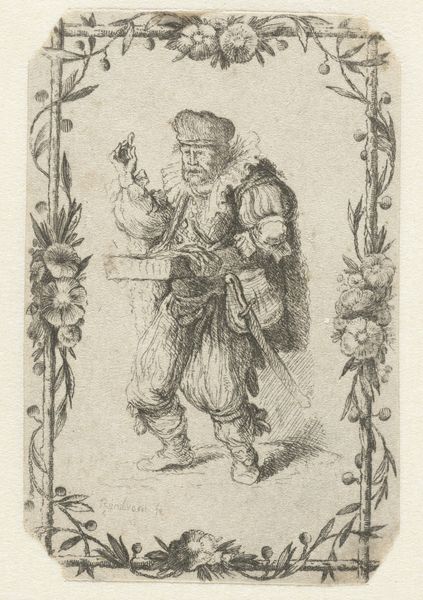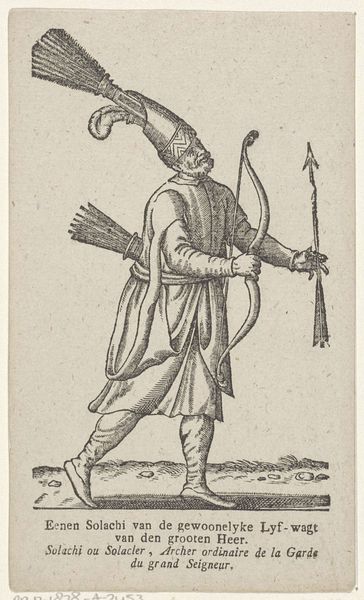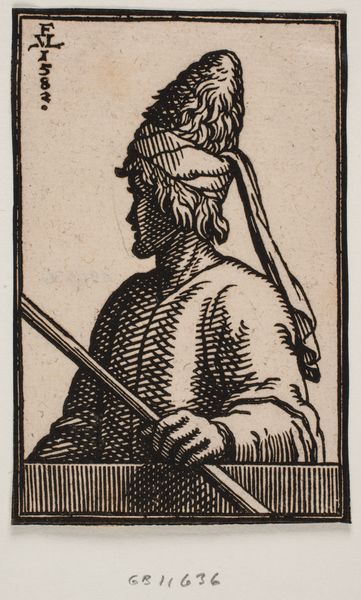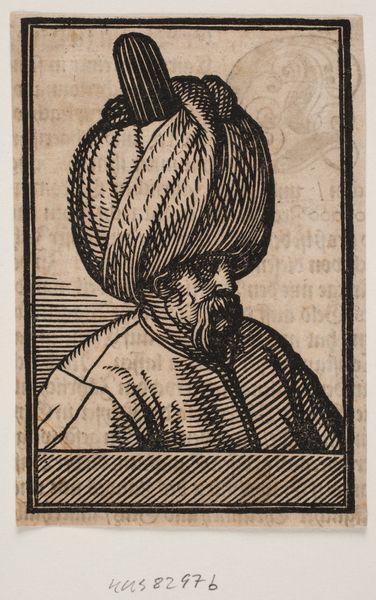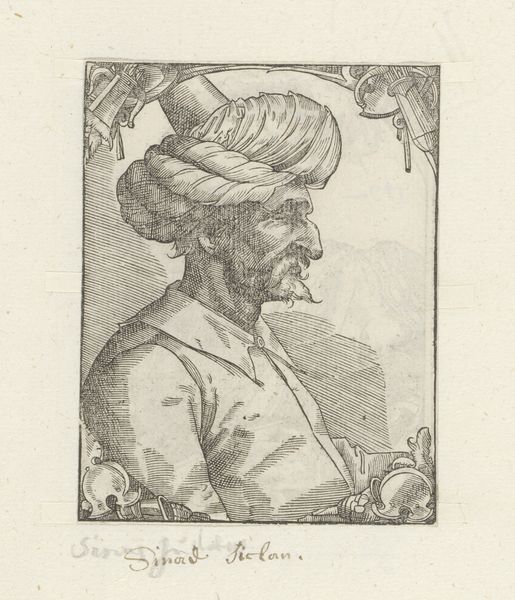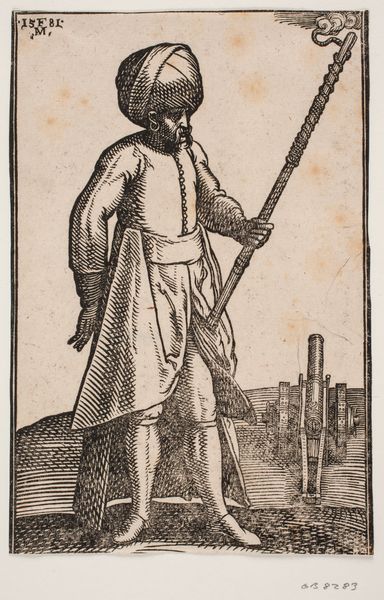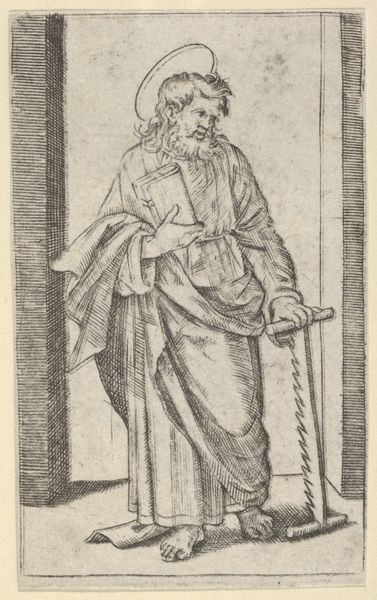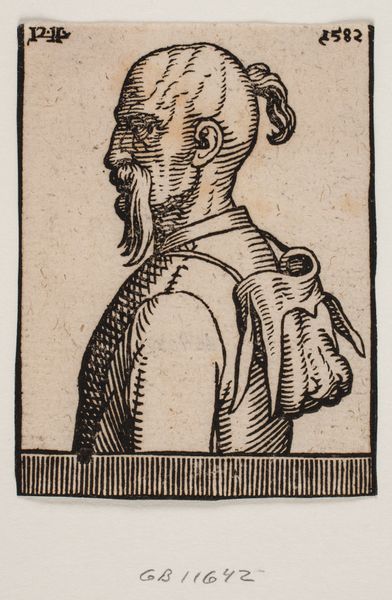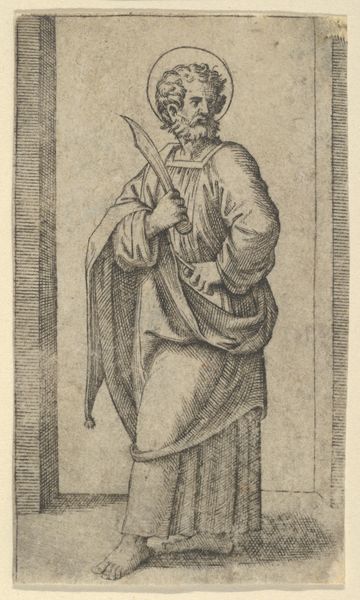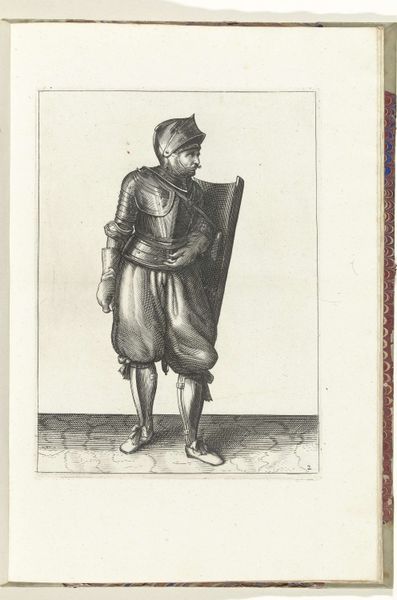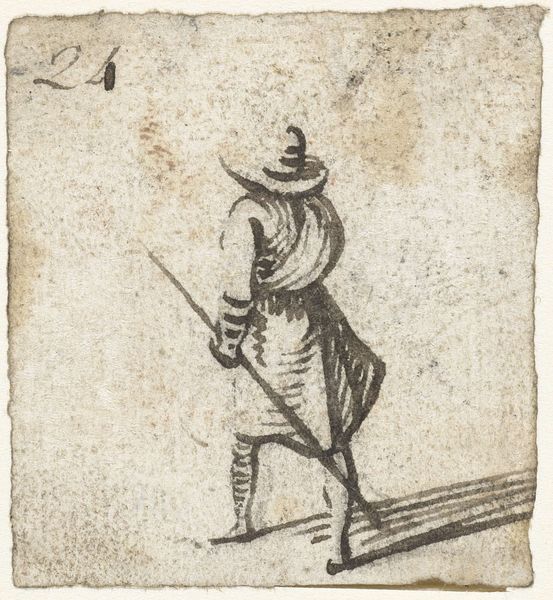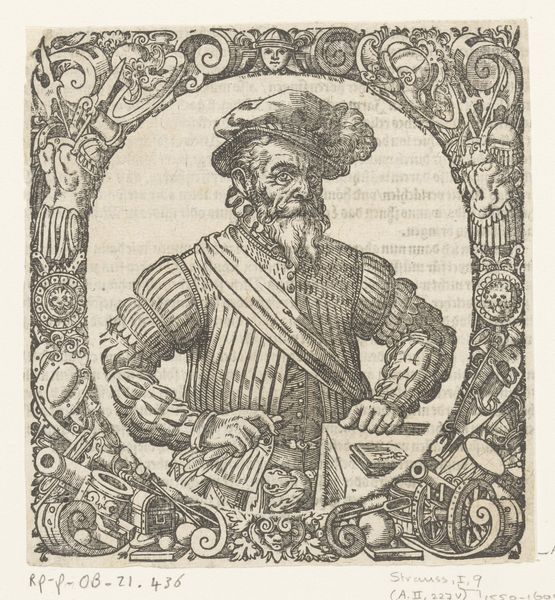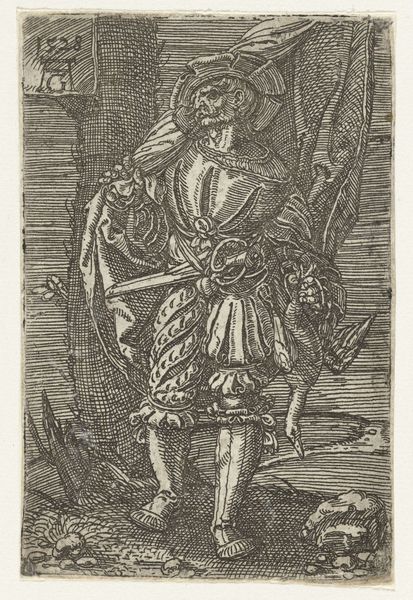
print, engraving
#
portrait
#
ink drawing
# print
#
pen sketch
#
figuration
#
line
#
islamic-art
#
genre-painting
#
engraving
Dimensions: height 92 mm, width 44 mm
Copyright: Rijks Museum: Open Domain
Editor: This engraving, dating back to the 17th century, depicts a kneeling man with a turban and an instrument in his hand. The linework feels incredibly detailed, especially given the small scale. How should we interpret this work within its historical context? Curator: This piece speaks to the Western fascination with the “Orient” during the 17th century, a fascination often built upon misrepresentation and a desire to exoticize the “other.” Think about who was commissioning and consuming these images. Was it aiming at faithful portrayal or the projection of European fantasies and power? Editor: So, it's not necessarily about genuine cultural exchange? Curator: Not likely. The inclusion of the turban, for example, places the figure within a specific cultural framework. However, it simultaneously flattens the diversity within Islamic cultures into a single, easily digestible image for a European audience. What do you observe about his posture? Editor: He’s kneeling, but doesn’t appear to be in a posture of worship. He almost seems to be holding a stick and adjusting something at his waist. Curator: Exactly. He is caught in a moment of mundane activity, yet the clothing elevates him. What power dynamic does it suggest when a dominant culture is misinterpreting those from a subservient community through depictions in genre painting and portraiture? Editor: It raises uncomfortable questions about appropriation and how art can perpetuate stereotypes. I hadn't considered that aspect before. Curator: These images served a political purpose by reinforcing existing hierarchies and often demeaning subjugated societies. By examining them critically, we can unpack the ways in which power operates through visual culture. Editor: Thank you. I’ll never see Orientalist art the same way again!
Comments
No comments
Be the first to comment and join the conversation on the ultimate creative platform.
